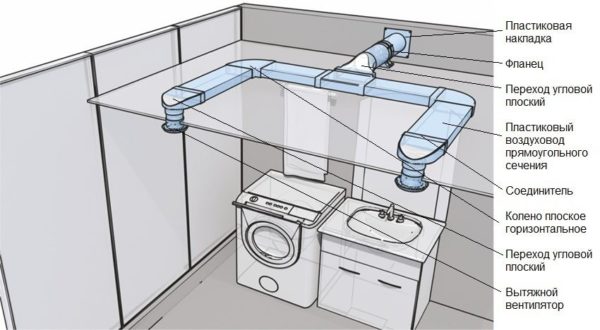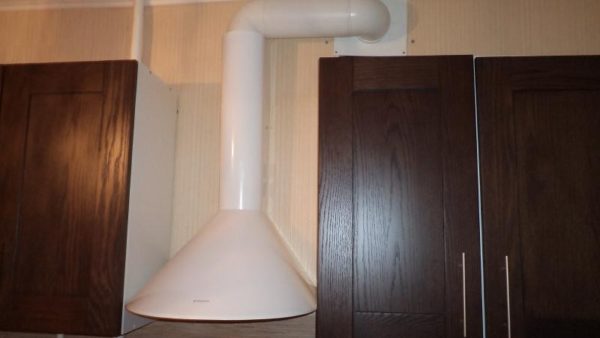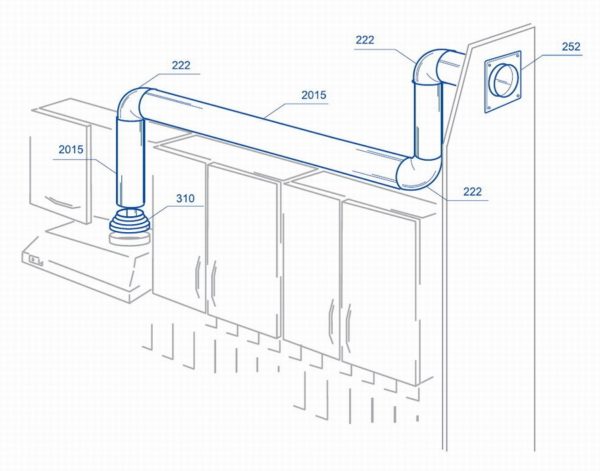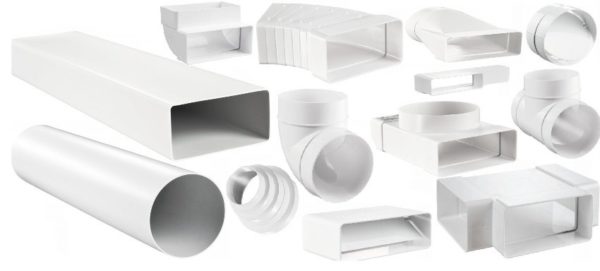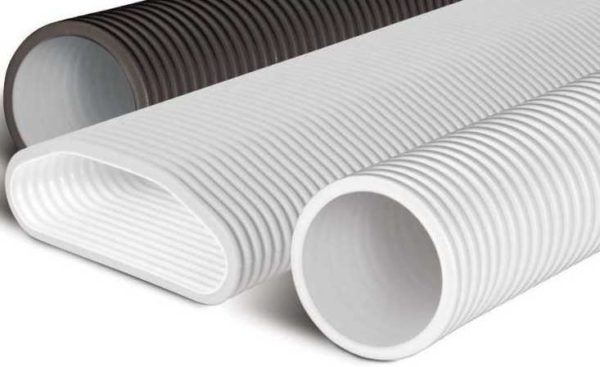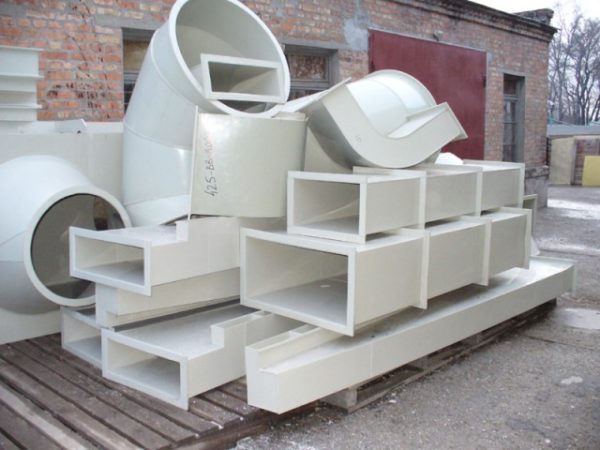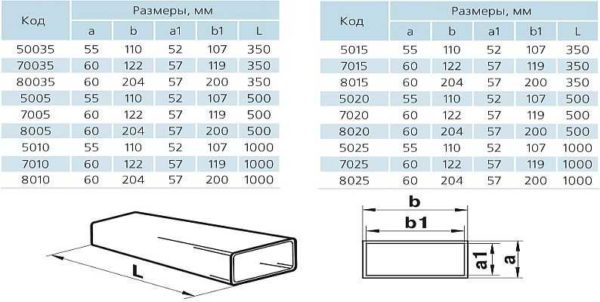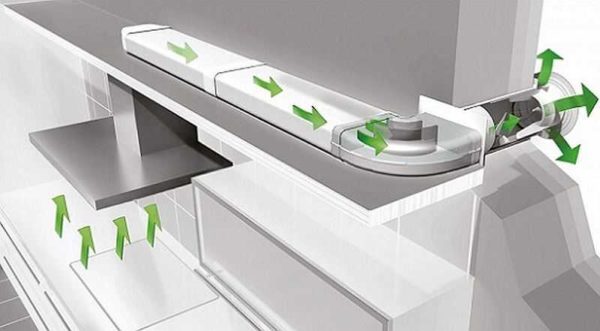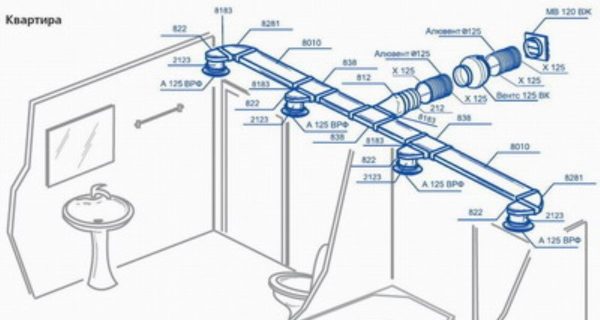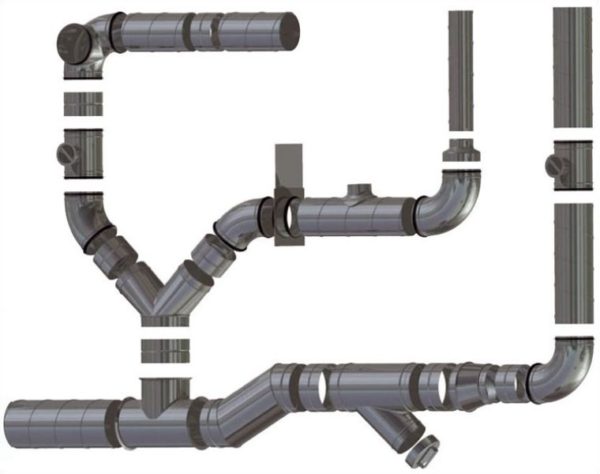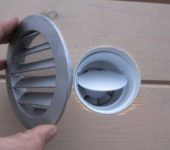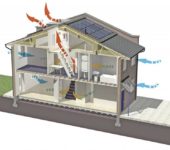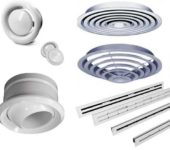Plastic ventilation ducts (air ducts)
The construction industry is considered one of the most actively developing. New technologies and materials are gradually replacing traditional ones. For example, plastic air ducts are increasingly used instead of metal ones.
The content of the article
Plastic air ducts: what materials are they made of
The word "plastic" hides a whole group of materials with different properties and performance characteristics. Ventilation boxes are made of the following plastics:
- PVC (polyvinyl chloride). It has a wide operating temperature range from -30 ° С to + 70 ° С. PVC air ducts can be installed in unheated rooms.
- PVDF (fluoroplastic). acid-resistant material with a wide temperature range - from -40 ° С to + 140 ° С.
- PP (polypropylene). Differs in increased resistance to chemical influences (tolerates acids, alkalis, organic matter).
- HDPE (low pressure polyethylene). This material is characterized by increased flexibility, it is more difficult to damage it mechanically, but it does not tolerate low temperatures.
When choosing plastic ducts, you should focus on the characteristics of plastics. For example, it is better to use polypropylene air ducts to connect a kitchen hood. If the temperature of the exhaust air is high, PVC or PVDF air ducts are suitable. Polyethylene boxes are quite suitable for distributing ventilation in residential and other technical premises.
Pros and cons, scope
Plastic air ducts are perceived negatively by many, since they are not sure that plastic does not emit harmful substances during operation. Poor-quality plastic may be unsafe, but even in household appliances there are so many plastic parts that this consideration seems irrelevant. For example, in a kitchen hood with filters, most of the components are made of plastic. And here the most difficult operating conditions are high temperature, a large amount of fat, evaporation of chemically active substances.
In general, experts recommend placing plastic on exhaust ventilation ducts. There are no restrictions here. But for the inflow, you need heat-resistant ones, made of special plastic. Especially if the supply air is heated or recuperated.
Where can I use
Another consideration for which it is not recommended to use plastic air ducts is problems with the fire department. There have been cases when a permit for the use of gas equipment was not signed if the ventilation was made of plastic. But it was a frame house, and there the requirements are different. If in doubt, it is best to check with your local fire inspector. In general, there are recommendations in the regulatory documents.
According to SNiP 41-01-2003 clause 7.11, plastic air ducts can be used in low-rise residential, public, administrative, and industrial buildings of category D. can't to be laid in basements, undergrounds, attics and technical floors, in rooms with standardized fire safety conditions.
Advantages and disadvantages
Plastic ducts have both adherents and opponents. Their main disadvantages:
- Flammability. Everything is clear here.Only metal air ducts do not spread fire. Although not all plastics burn and spread combustion, such “reduced” flammability materials are expensive. Therefore, plastic air ducts are allowed only in one-story houses.
- Static charge builds up, causing dust to stick (it may flare up again). In fact, much more dust accumulates in corrugated areas. To reduce its amount, it is necessary to install a plastic air duct after the completion of the "dusty" construction work and install filters that trap most of the dust. In addition, plastic ventilation pipes are treated with a special compound. It forms a film on the surface that prevents the build-up of static charges.
- With low quality workmanship, thin walls or with a large cross-section, gaps may form at the joints due to a change in geometry. This can be fixed, but there is such a drawback.
These are the cons of using plastic ducts. There are more than enough advantages:
- Simple installation. The presence of fittings and shaped elements allows you to create a system of any configuration. Plastic is easy to cut, lightweight.
- Due to the perfectly smooth walls, the air encounters less resistance.
- Easier to ensure tightness. For reliability, the joints can be greased with a sealant.
- Modern plastic air ducts are joined using butt-joint locks without overlaps, which reduces resistance during air movement.
- Low noise level. With a capacity of up to 100 m3 / min, the air movement is almost silent.
- Corrosion resistant.
In general, a plastic duct is not an ideal solution, but the ease of installation and good performance outweigh the disadvantages. In general, experts recommend placing plastic on exhaust ventilation ducts. There are no restrictions here. But for the inflow, you need heat-resistant ones, made of special plastic. Especially if the supply air is heated or recuperated.
Also, when selecting, it is worth proceeding from the operating conditions. For example, it makes sense to use a plastic air duct on the exhaust ventilation duct from wet rooms, since galvanized ones are prone to corrosion, and stainless ones are very expensive.
Cross-section of plastic ducts and their dimensions
Plastic boxes for ventilation make:
- Round section.
- Rectangular section (rectangles and squares).
Each type is rigid and flexible. Rigid boxes are cast in special shapes. Their main characteristic (except for geometric dimensions) is wall thickness. To keep the plastic duct in shape, the wall thickness must be 3 mm. Thinner ones bend, thick-walled ones have more weight and a much higher price.
The second type is flexible plastic air ducts. Are made in the form of corrugation. The wire frame is wrapped with a layer of plastic so that the wire itself is sealed in the plastic. Such air ducts are easier to install, since they can be bent at any angle.
The length of one piece of corrugated plastic pipe for ventilation of the pipe is up to 2.5 meters, so that short routes can be made exclusively from one single piece. Installation is very simple: we fixed it at both ends, laid it out along the route, and fixed it in several places. It is advisable to stretch the corrugation as much as possible - to reduce the unevenness of the walls and resistance to air flow.
But, even in a well-stretched corrugation, due to uneven walls, air movement is difficult. Therefore, under equal conditions, corrugated air ducts are larger. In addition, dirt, grease, and dust accumulate faster on an uneven surface.The walls are very thin and have very little mechanical strength. Semi-rigid options are more reliable (as in the photo above). They bend worse, but have higher reliability.
Section of round plastic ducts
The most common round plastic air ducts:
- 100 mm;
- 125 mm;
- 150 mm;
- 200 mm.
But there are also much larger sizes - up to 2.4 meters in diameter - for industrial premises. Round ventilation pipes are sold in sections of 500 mm, 1000 mm, 1500 mm, 2000 mm, 2500 mm.
Section of rectangular ventilation pipes
Rectangular plastic air ducts for domestic use come in the following sizes:
- height - 55 mm, 60 mm;
- width - 110 mm, 122 mm, 204 mm;
- length - 350 mm, 500 mm, 1000 mm, 1500 mm, 2000 mm and 2500 mm;
- wall thickness - 2-8 mm.
The larger the cross section of the plastic pipe for ventilation, the thicker its walls are. This is necessary so that the products do not change their geometric dimensions. To save on shorter walls (in Figure a), the thickness can be smaller (2-3 mm, for example), and the wider part (in the photo marked b) is made thicker - 3-4 mm.
Which is better: round or rectangular duct?
What form of air ducts is best? Round or square? If we take in terms of bandwidth, it is better to be round. In them, vortex flows meet less resistance, the movement of air masses is faster. The rectangular corners remain virtually unused. Therefore, rectangular ones are set with a larger cross-sectional area than round ones.
Despite the worst characteristics, rectangular plastic pipes are often used for ventilation. They are easier to hide by running them low over wall cabinets, for example. Also, when arranging a suspended or stretch ceiling, they require a lower height, since there are models that are flat and wide. Even if a false ceiling is not provided and there is nowhere to hide the ventilation duct, a rectangular box at the junction of the wall and ceiling looks better than a round one.
Installation features
Installation of plastic air ducts is many times easier than working with metal ones. You can cut plastic pipes for ventilation with a hacksaw with a metal blade or a grinder with a cutting disc. In any case, the cut is smooth, without burrs.
Fittings and fixing to wall and ceiling
For turns, branches, contractions, extensions, there are special shaped elements - corners, tees, adapters. There are adapters from one size to another, and from round to rectangular. This is useful, for example, if you need to insert a fan. There are couplings for joining two pipes. Everything is assembled even easier than a children's designer.
Pipes are fastened to walls or ceilings using special clamps. They are also made of plastic, fixed to the ceiling or walls with dowels or self-tapping screws. The pipes are simply "snapped" into the installed clamps.
Instead of plastic clamps for fastening ventilation ducts, you can use perforated drywall hangers. If a rectangular plastic pipe is mounted, they are fixed with two dowels / screws at a distance equal to the width of the pipe. The remaining edges are folded down, fastened to the side of the pipe with self-tapping screws. This method is more time consuming, but suspensions are cheaper. But using self-tapping screws is not the best solution. Dust will adhere to them, on a piece of screw sticking out inside the duct, after a few years, which will lead to a deterioration in draft. After 8-10 years, a plug of dust forms at the place of each self-tapping screw. As a result, ventilation may stop working altogether.We'll have to clean it.
Assembly features
If it is necessary to fix the air ducts on the ceiling, they are assembled in large sections on the floor, then they are “tried on” on the ceiling, the places where the fasteners are installed are marked. Having fixed the two sections, they are connected to each other. This is how the whole system is assembled. Nothing really complicated. It is difficult to design and select dimensions, and you can mount the air duct according to the ready-made scheme yourself without any problems.
To ensure tightness in the system, experts recommend coating the joints with a sealant. A neutral white silicone sealant is recommended. After drying, it remains elastic and does not crack from vibration, compensates for thermal expansion.
If, when two elements of the system are joined together, a "pocket" is formed - the plastic does not adjoin well due to the mismatch of geometric dimensions, the joint is also coated with a sealant, and then wrapped with a special metallized tape. In such cases, it is recommended to remove the "pocket" by pulling it up with a self-tapping screw. It is not worth doing this all for the same reason - a dust plug will "grow" in this place, which will block the air flow.

